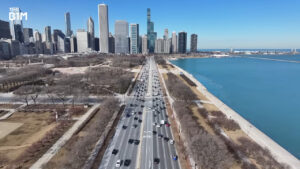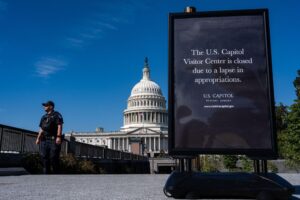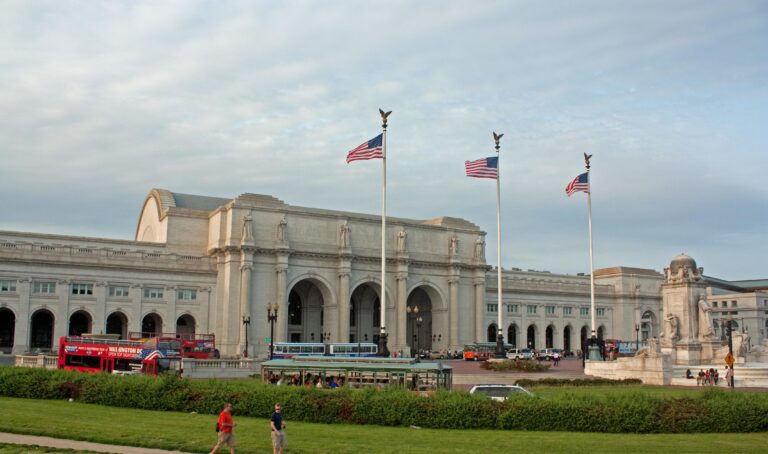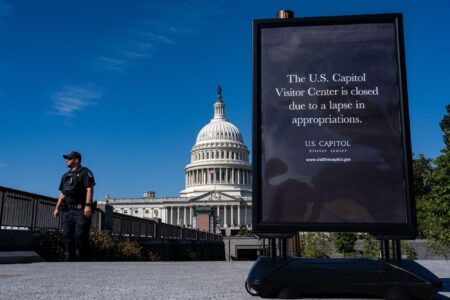Federal Takeover of Washington, D.C.’s Union Station: A New Chapter in Transit Management
Federal Intervention in Union Station: Balancing National Oversight and Local Interests
The recent announcement by the Trump administration to take over the management of Washington, D.C.’s renowned Union Station has ignited a vigorous debate surrounding the extent of federal authority versus local governance. Proponents of this federal takeover argue that centralized control could lead to more efficient operations and heightened security at one of the busiest transportation centers in the country, aligning the station’s management with broader national infrastructure objectives. Conversely, opponents express concern that this move may marginalize local voices, disrupt community-led revitalization projects, and diminish the station’s historical and cultural significance.
This controversy extends beyond jurisdictional disputes, touching on practical matters such as budget distribution and operational focus. Key perspectives include:
- Federal Viewpoint: Prioritizes national security, uniform policy application, and increased federal funding for infrastructure improvements.
- Local Perspective: Emphasizes the importance of community involvement, safeguarding local heritage, and sustaining city-driven development plans.
- Economic Considerations: Potential realignment of employment opportunities and funding sources affecting both federal agencies and municipal stakeholders.
| Dimension | Federal Management | Local Management |
|---|---|---|
| Governance Model | Centralized, national oversight | Decentralized, community-based control |
| Funding Sources | Federal budget appropriations | City revenues and local grants |
| Security Approach | Enhanced federal security protocols | Collaboration with local law enforcement |
Impact on Commuters and Regional Transit Networks
For the millions who depend on Union Station daily, the federal takeover could bring notable shifts in how services are managed and delivered. The administration’s plans include modernizing passenger flow systems and reinforcing security frameworks. However, transit experts caution that increased federal control might introduce stricter regulations, potentially complicating partnerships with local transit agencies and affecting commuter convenience.
On a broader scale, the station’s role within the regional transportation ecosystem is expected to evolve. The administration aims to prioritize investments that enhance multimodal connectivity, upgrade parking infrastructure, and modernize aging rail assets. A particular focus is on expanding capacity to accommodate rising ridership and integrating emerging high-speed rail technologies. Anticipated improvements include:
- Enlarged platform areas to alleviate congestion during peak travel times
- State-of-the-art digital signage and real-time information systems to improve passenger navigation
- Strengthened safety measures aligned with federal security standards
| Feature | Current Condition | Planned Enhancements |
|---|---|---|
| Passenger Capacity | Moderate congestion during rush hours | Expanded platforms to increase throughput |
| Security Screening | Local station-based checks | Federalized, more rigorous screening procedures |
| Intermodal Connectivity | Limited integration with other transit modes | Enhanced links to bus and metro systems |
Strengthening Security and Operational Protocols Under Federal Oversight
The Trump administration’s strategy includes a comprehensive revamp of Union Station’s security infrastructure, reflecting a shift toward intensified federal supervision. This initiative aims to streamline operational efficiency while addressing growing concerns about vulnerabilities in transportation hubs nationwide. Key security enhancements involve deploying additional federal security personnel, incorporating cutting-edge surveillance technologies, and updating emergency response procedures.
Notable operational updates include:
- Establishment of federally managed security checkpoints
- Expansion of inter-agency intelligence-sharing frameworks
- Deployment of rapid response units stationed on-site
- Upgrades to cybersecurity systems protecting station operations
| Aspect | Previous Oversight | New Federal Oversight |
|---|---|---|
| Security Management | Local authorities and Amtrak | Federal agencies including DHS and TSA |
| Personnel Deployment | Primarily local law enforcement | Federal security officers and rapid response teams |
| Technology Utilization | Basic CCTV and manual patrols | Advanced AI-driven surveillance and biometric screening |
Guidance for Stakeholders to Ensure Smooth Transition and Service Excellence
To facilitate a smooth handover and maintain high service standards, transparent and continuous communication among all stakeholders is essential. This includes local transit agencies, federal officials, private contractors, and community representatives. Emphasizing passenger experience through clear signage, timely service updates, and accessible customer support will be critical in preserving traveler trust during this period of change.
Effective transition management should focus on strategic collaboration and operational resilience. Recommended actions include:
- Creation of joint task forces: Collaborative teams to oversee security, maintenance, and scheduling during the transition.
- Retention incentives for staff: Programs to encourage employee continuity and safeguard institutional knowledge.
- Implementation of advanced monitoring technologies: Proactive detection and resolution of operational issues.
- Community engagement initiatives: Public forums and outreach to address concerns and inform commuters about upcoming changes.
| Focus Area | Recommended Strategy | Anticipated Benefit |
|---|---|---|
| Security | Coordinate federal and local law enforcement efforts | Improved safety and deterrence capabilities |
| Service Quality | Establish continuous passenger feedback mechanisms | Enhanced responsiveness and customer satisfaction |
| Maintenance | Conduct joint inspections and emergency preparedness drills | Minimized downtime and expedited recovery |
Conclusion: Monitoring the Future of Union Station Under Federal Control
As the Trump administration moves forward with its plan to take charge of Washington, D.C.’s Union Station, the transit community and public remain attentive to how this unprecedented federal intervention will reshape the station’s management, security, and daily operations. Given Union Station’s pivotal role as a transportation hub in the nation’s capital, the outcomes of this transition will be closely observed by commuters, policymakers, and infrastructure experts alike. Ongoing updates will provide further clarity on the long-term impacts of this significant shift in governance.





